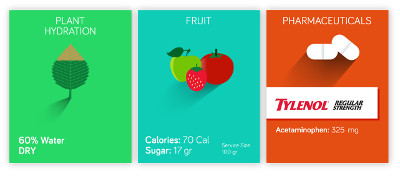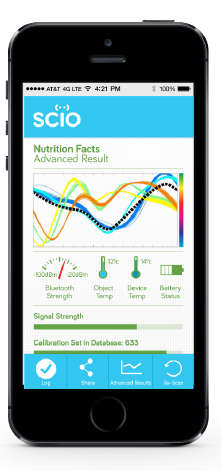| SCiO The Sensor That Can Tell You What Things Are Made Of |
| Written by Harry Fairhead | |||
| Saturday, 14 June 2014 | |||
|
SCiO is a pocket-sized near infra red spectroscope. Sounds almost boring, but it has the potential to identify the chemical make up of anything you point it at. It also has an API, which means you can create apps that tell the user things that were previously impossible to know. SCiO's Kickstarter has just a few hours to run and so far has managed to raise over $2.6 million - which is way beyond its initial $200,000 goal. Consumer Physics, an Israel company, promises that the device will ship by the end of the year and, judging by the Kickstarter rewards, it should cost around $150 - which is remarkable.
But why the excitement? Why are so many people keen to part with money for a chemical analysis device? Part of the reason is that the Kickstarter pitch has emphasised many, perhaps fanciful, applications.
Check out the promo video:
I can't say how possible or useful any of these ideas are. The basic principle of near infra red spectroscopy is that you shine a light with a frequency in the near infrared and measure how much of each frequency is reflected back. The light reflected back corresponds to the vibrational modes of the different chemicals in the sample. Near infra light penetrates samples to a depth that means you don't have to prepare the sample to see into the bulk.
The big problem with near infra red spectroscopy is that unlike infra red spectroscopy it doesn't produce sharp peaks that can be used as easy finger prints of the chemicals in the sample. Instead the spectrum is composed of broad bands. This makes working out what is in the sample more difficult. Typical techniques involve statistical analysis like principal components, Fourier transforms and discriminant functions. To make it possible for the pocket device to identify what it is looking at the data is first uploaded via Bluetooth to a mobile phone, iOS or Android, and then on to the company's servers where it can be analysed. The user then gets a more processed and easier to understand "what's in the sample" type of result. Is it really possible for the device to tell the innocent user what the composition of their food is? As it could, in theory, detect the amount of carbohydrate, water and so on, yes, it could provide the proportions of each. After that it is up the app to work out the total calories based on typical calorific value and total mass of food. The idea that you can check your food composition is probably one of the main reasons that people bought into the Kickstarter. But the real potential of the device goes well beyond this. The important possibility that SCiO brings with it is the central data gathering. With an army of unwitting data gatherers sending their scans back to the central data base there is the potential to learn the spectra of many different types of material. For example, I've been an amateur geologist for a while and I've always been frustrated that, while amateurs in other fields have tools like telescopes and electronic gadgets, all I've got is a hand lens. It seems that you can use near infra red spectroscopy to identify minerals and rocks in general. Until SCiO this has always been a laboratory procedure but, if it works as advertised, it suddenly becomes a field tool. The same sort of opportunity can be found in any field of study where what something is made of is important. And it hasn't gone unnoticed that this is a lot like the sort of scientific tricorder that featured in most episodes of Star Trek. The good news is that there is an SDK and you can develop applications for the device. The Kickstarter FAQ has some guidance on what seems feasible, but the key to what is probably not feasible seems to be concentration. - "Any application in which the concentration of the measured ingredient is less than about 1% or the needed accuracy is much better than about 1%" If you are looking for trace contaminates then it probably isn't going to work - but there might be exceptions. The app that you create would most likely be tailored to the particular area of use. For example, I would want a "rock hound" while some other user might want a "fungus identifier". This really is the Internet of Things. When you start thinking of the possibilities it is difficult not to get excited. If it works as advertised.
More InformationRelated ArticlesKinect 3D Full Body "Hologram" Super Seeing Software Ready To Download Super Seeing - Eulerian Magnification Computer Model Explains High Blood Pressure
To be informed about new articles on I Programmer, install the I Programmer Toolbar, subscribe to the RSS feed, follow us on, Twitter, Facebook, Google+ or Linkedin, or sign up for our weekly newsletter.
Comments
or email your comment to: comments@i-programmer.info |
|||
| Last Updated ( Saturday, 14 June 2014 ) |




